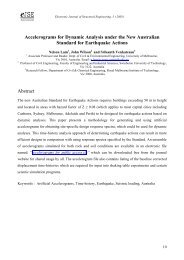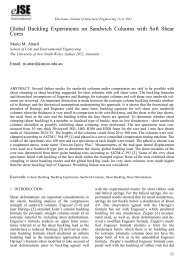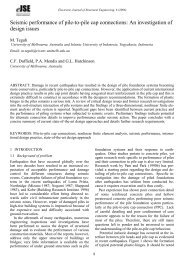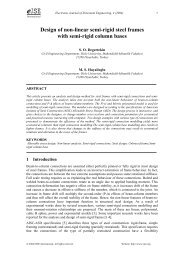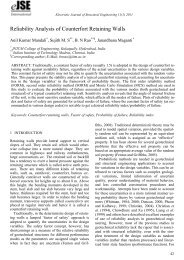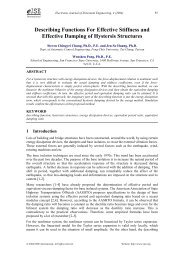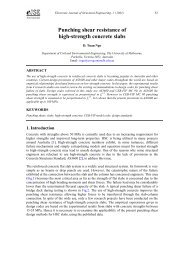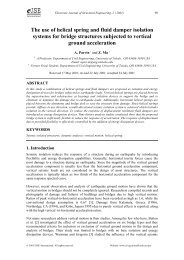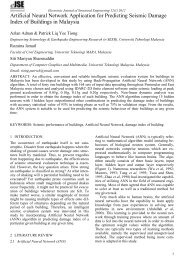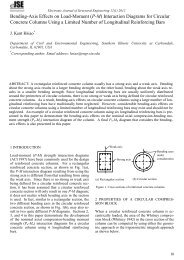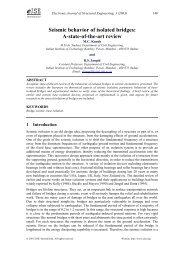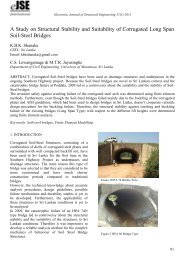Create successful ePaper yourself
Turn your PDF publications into a flip-book with our unique Google optimized e-Paper software.
D. <strong>Tutorial</strong> Part 2 – Pushover Analysis<br />
This portion of the tutorial explores the pushover analysis capabilities of <strong>SAP2000</strong>. It is<br />
assumed that you have basic knowledge of the pushover concept, and that you are familiar with<br />
the ATC-40 and FEMA-273 documents.<br />
If you did not complete part C of the tutorial, and thus create the basic model, then you should<br />
open the file named Sapwb01c.sdb that was supplied with this tutorial. Note that in a typical<br />
analysis you should have, at the very least, run and reviewed the results of a static analysis to<br />
verify the behavior of your model prior to running a pushover analysis.<br />
<strong>SAP2000</strong> has extensive online help for the pushover analysis. Press F1 from within a pushover<br />
related dialog box to get context sensitive help related to the dialog box. To see all of the help<br />
items related to pushover analysis, select Search For Help On... from the Help menu, select the<br />
Index Tab, highlight the Pushover index entry and click the Display button.<br />
Step 1: Defining Hinge Properties (Pushover)<br />
In this tutorial we will use the default hinge properties, so it is not necessary to define any new<br />
properties. In this step we will review the process of viewing already defined hinge properties,<br />
and will discuss the process of defining new hinge properties. This step can be skipped if you do<br />
not want to review the hinge properties.<br />
Background: There are three types of hinge properties in <strong>SAP2000</strong>. They are default<br />
hinge properties, user-defined hinge properties and generated hinge properties. Only<br />
default hinge properties and user-defined hinge properties can be assigned to frame<br />
elements. When these hinge properties are assigned to a frame element, the program<br />
automatically creates a different generated hinge property for each and every hinge.<br />
Default hinge properties can not be modified. They also can not be viewed because<br />
the default properties are section dependent. The default properties can not be fully<br />
defined by the program until the section that they apply to is identified. Thus to see<br />
the effect of the default properties, the default property should be assigned to a frame<br />
element, and then the resulting generated hinge property should be viewed. The<br />
built-in default hinge properties are typically based on FEMA-273 and/or ATC-40<br />
criteria.<br />
User-defined hinge properties can be either be based on default properties or they<br />
can be fully user-defined. When user-defined properties are based on default<br />
properties, the hinge properties can not be viewed because, again, the default<br />
properties are section dependent. When user-defined properties are not based on<br />
default properties, then the properties can be viewed and modified.<br />
The generated hinge properties are used in the analysis. They can be viewed, but<br />
they can not be modified. Generated hinge properties have an automatic naming<br />
convention of LabelH#, where Label is the frame element label, H stands for hinge,<br />
<strong>SAP2000</strong> <strong>Web</strong> <strong>Tutorial</strong> 1 86



